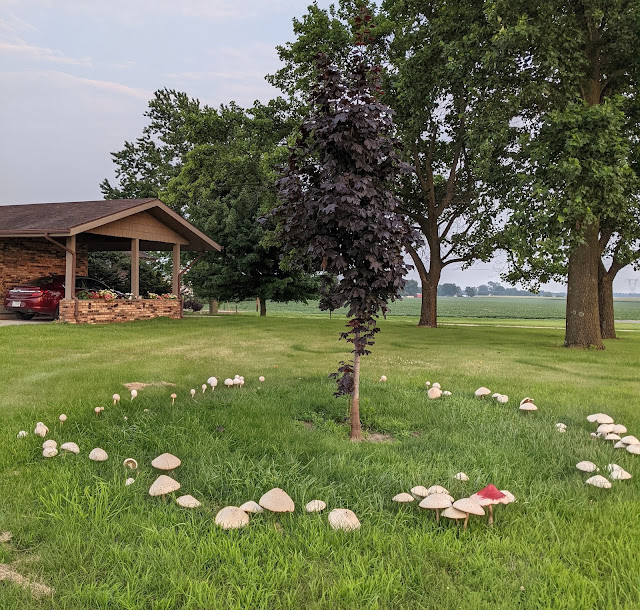HEAL-ALL
5 years ago I did a wildflower project with our property. I would identify the wildflowers we have as they appeared each week in the spring. I took photos of them and put them into an album so that I can refresh my memory each year.
My scientist friend told me to use
Newcomb’s Wildflower Guide to help identify them. Imagine my surprise when I learned that this book is not in color! Actually, color is helpful when finding a plant’s name, but the structure of a plant is way more important. Does it have irregular flowers or two regular parts or three regular parts? Does it have basal leaves, opposite leaves or alternate leaves? Are the leaves divided or lobed? This routine will help you to identify what it is.
I discovered a new wildflower in my yard today, right beside the front sidewalk. I was surprised I hadn’t caught it in the past, but we’ve had a huge amount of rain and rain and rain, so the yard hasn’t been mowed. I suspect this has allowed them to grow high enough to be noticed.
Our yard doesn’t have much grass; it is mostly…other stuff. And Selfheal (or Heal-all) is now one of the Other Stuff.
Prunella vulgaris can be found everywhere in the world, often by roadsides and waste-places. It's leaves and stems can be eaten in salads, and the entire plant can be cooked in stew. Wikipedia says the Chinese thought it could "change the course of a chronic disease".
I was wondering if I should move it into a more lovely spot as an official herb in my garden, but the internet says it's probably not worth it. It has no lovely smell and not much flavor. Some people just call it a weed, and that's what it is in my yard. I'll just let it join its fellow weeds there and let it be.






























